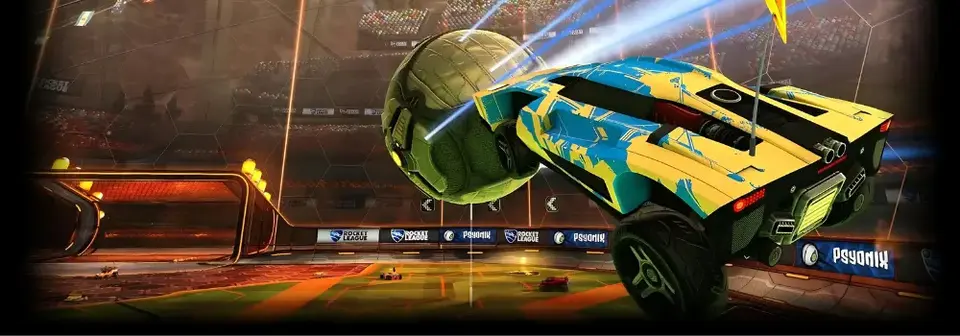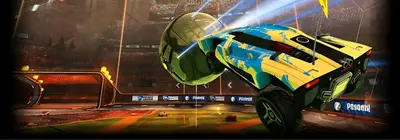
Best Rocket League Camera Settings
FELIXRocket League is a dynamic racing game that combines elements of soccer with high-speed, acrobatic cars.
While core skills, strategy, and teamwork are essential elements of gameplay, one of the often underestimated factors for success is camera settings. Proper settings can significantly improve your visibility, control, and accuracy on the field, giving you a competitive edge.
In this article, we will explore the best camera settings in Rocket League, explain how they work, and how you can adjust them to fit your playstyle.
Why Camera Settings Are Important in Rocket League
Unlike many other games, Rocket League gives players extensive control over the camera. Adjusting these settings impacts your visibility on the field, your ability to track the ball and opponents, and overall control of your car.
Here are the main advantages of optimized camera settings:
- Improved Spatial Awareness: Well-tuned camera settings allow you to better see the positions of the ball, opponents, and teammates, which is critical for making the right decisions.
- Enhanced Car Control: Proper camera settings can improve your control over the car during dribbles, aerials, and quick maneuvers, as the right field of view (FOV) lets you better see the car's position relative to the ball.
- Greater Stability: Stable and consistent camera settings can help you reliably perform complex mechanics such as air dribbles, flips, and quick turns.
Now, let's delve into the key settings.

Key Camera Settings to Adjust
Field of View (FOV)
The field of view is one of the most crucial camera settings in Rocket League. It dictates how much of the field you can see at any given moment. This setting determines how high the camera is positioned behind your car.
A higher camera angle allows for better visibility ahead, which can be useful for dribbling, as it makes it easier to spot opponents preparing to attack.
However, a higher camera can also make aerial play more challenging, so it’s essential to find the right height that suits your playstyle.
- Recommended value: 100–110
- Why: A wider field of view (around 110) allows you to see more of the field, which is useful for tracking the ball and surroundings. However, some players may find it harder to control their car with too wide a perspective, so a slightly narrower FOV (around 100 or 105) might be better for those focusing more on their car.
Distance
This setting determines how far the camera is positioned behind your car. It affects how much of the field and your car you can see.
- Recommended value: 260–280
- Why: A camera distance of around 270 provides a balance between seeing enough of the field while maintaining control over the car. If you prefer more precise control, reducing this value can help, while increasing it allows you to see more of the field.
Height
Height determines how high the camera is positioned above your car. This setting can affect your spatial perception, especially during aerial play.
- Recommended value: 100–120
- Why: Most players find that a camera height of around 110 works well. It allows a good perspective on the ball while keeping the car movements visible. Lowering the height can help you feel closer to the car and ball, but it may reduce your field of view.
Angle
The angle determines how much the camera tilts down relative to your car.
- Recommended value: -3 to -5
- Why: An angle of -3 to -4 is ideal for most players, as it provides a good balance between seeing the car and the ball. If the angle is too steep (-5 or more), it can make tracking ball movement difficult, especially in the air or at high speeds.
Stiffness
Camera stiffness affects how tightly the camera follows your car. Higher stiffness means the camera stays closely tied to the car, while lower stiffness allows more flexibility and smooth transitions.
- Recommended value: 0.3–0.7
- Why: Stiffness is mainly a matter of personal preference, but most players choose between 0.4 and 0.5. Higher stiffness can make the car easier to control during dynamic play, while lower stiffness gives the camera a smoother, cinematic feel. Adjust according to how closely you want the camera to follow your car.
Swivel Speed
Swivel speed determines how quickly your camera rotates when you move the camera stick in Rocket League. Increasing swivel speed allows for faster field scanning.
However, high swivel speed isn't always necessary, and many pro players prefer to keep this setting lower to avoid missing crucial details due to rapid camera movement.
- Recommended value: 4.5–6.5
- Why: A swivel speed of around 5 is optimal for most players. It’s quick enough for fast glances, but not too sharp. Adjust based on how often you use manual camera rotation.
Transition Speed
Transition speed determines how quickly your camera switches between ball cam and car cam in Rocket League. While a quick transition might seem ideal, instant switching can sometimes cause you to miss important details or become disoriented.
Like swivel speed, transition speed depends on personal preference. There is no one-size-fits-all setting used by all pros, so try experimenting with different professional settings to find what suits your playstyle best.
- Recommended value: 1.0–1.5
- Why: A faster transition (e.g., 1.2) ensures you don't lose control of the car or ball during mode switches, which can be critical in fast-paced play. However, some players prefer a slower transition to avoid disorientation, so adjust it based on your playstyle.
Ball Cam Toggle vs. Hold
The Ball Cam can be toggled on/off with a single button press, or held down to activate.
- Recommended choice: Toggle.
- Why: Most experienced players prefer toggling Ball Cam, as it allows more freedom in controlling the camera during key moments in the game. Holding the button limits your ability to perform multiple actions simultaneously and is less effective during quick transitions.
Example Camera Settings from Top Players
Professional players use custom Rocket League camera settings that suit them personally and provide certain visual advantages over others. If you're a beginner and don't want to experiment with your settings, you can use preset templates from other players, including professionals.
Squishy Muffinz (Cloud9)
- FOV: 110
- Distance: 270
- Height: 100
- Angle: -3
- Stiffness: 0.45
- Swivel Speed: 5.0
- Transition Speed: 1.2
Kaydop (Vitality)
- FOV: 110
- Distance: 270
- Height: 110
- Angle: -4
- Stiffness: 0.50
- Swivel Speed: 5.0
- Transition Speed: 1.2
JSTN (NRG)
- FOV: 110
- Distance: 270
- Height: 100
- Angle: -3
- Stiffness: 0.45
- Swivel Speed: 4.70
- Transition Speed: 1.20
| Player | FOV | Height | Distance | Stiffness | Swivel Speed | Camera Shake |
|---|---|---|---|---|---|---|
| Alpha54 | 110 | 110 | 270 | 0.35 | 3.70 | No |
| Atow. | 110 | 100 | 270 | 0.40 | 4.20 | No |
| Beastmode | 109 | 90 | 270 | 0.45 | 7.00 | No |
| ExoTiiK | 110 | 110 | 270 | 0.50 | 4.00 | No |
| Lj | 110 | 100 | 270 | 0.55 | 5.00 | No |
| M0nkey M00n | 109 | 110 | 260 | 0.60 | 4.00 | No |
| Radosin | 109 | 110 | 270 | 0.70 | 4.20 | No |
| rise. | 110 | 90 | 260 | 0.40 | 6.50 | No |
| Vatira | 110 | 90 | 270 | 0.35 | 6.90 | No |
| Zen | 110 | 100 | 270 | 0.35 | 4.00 | No |
These settings are not one-size-fits-all but provide a good starting point for players looking to adjust their camera.
Conclusion
Choosing the best camera settings in Rocket League is about balancing visibility, control, and comfort. While the settings in this guide are popular among professionals, it's essential to experiment and find what works best for you.
Once you dial in the right settings, you will notice improvements in spatial perception, ball control, and overall game stability.
Article info
Gaming
Upcoming Top Matches
















Comments